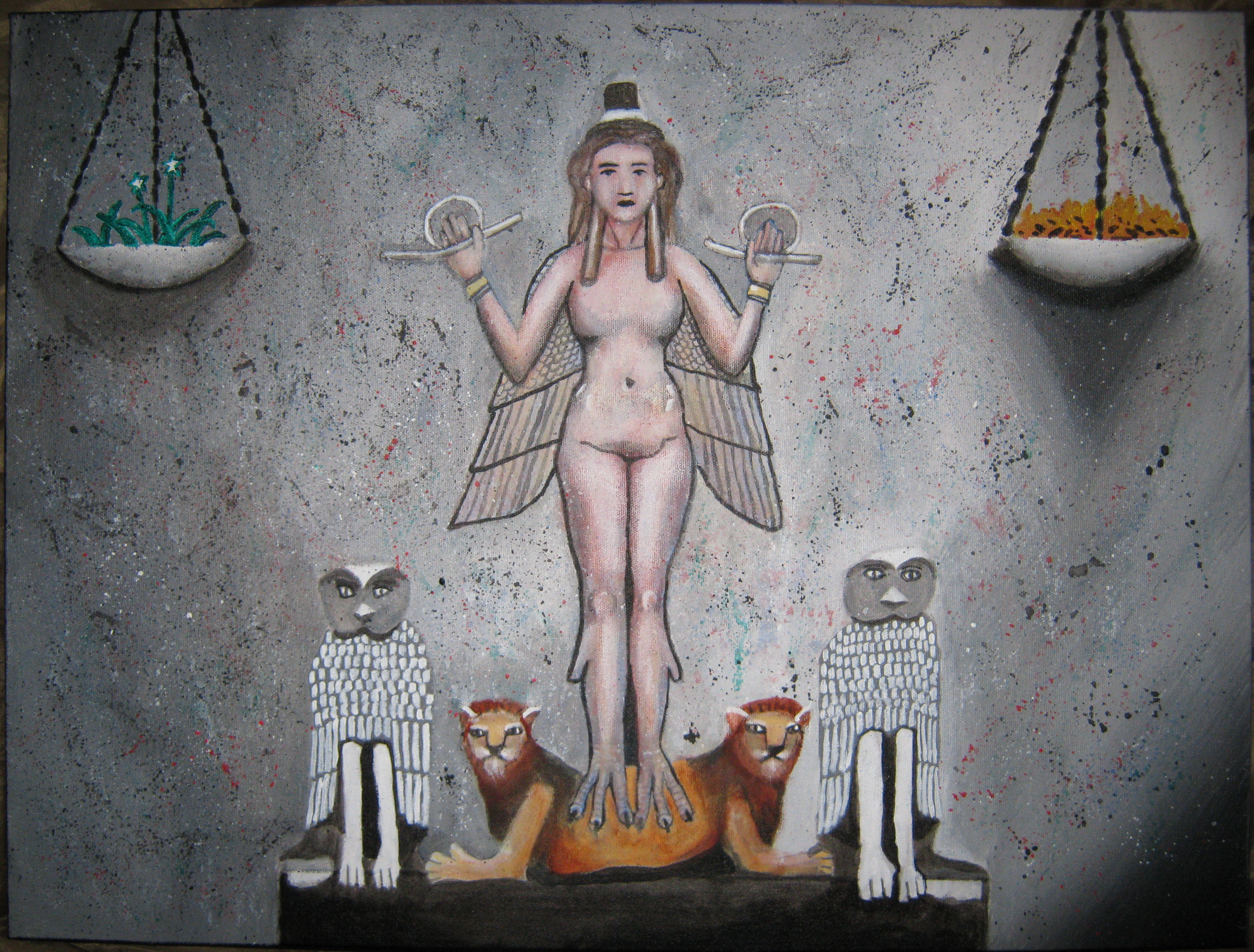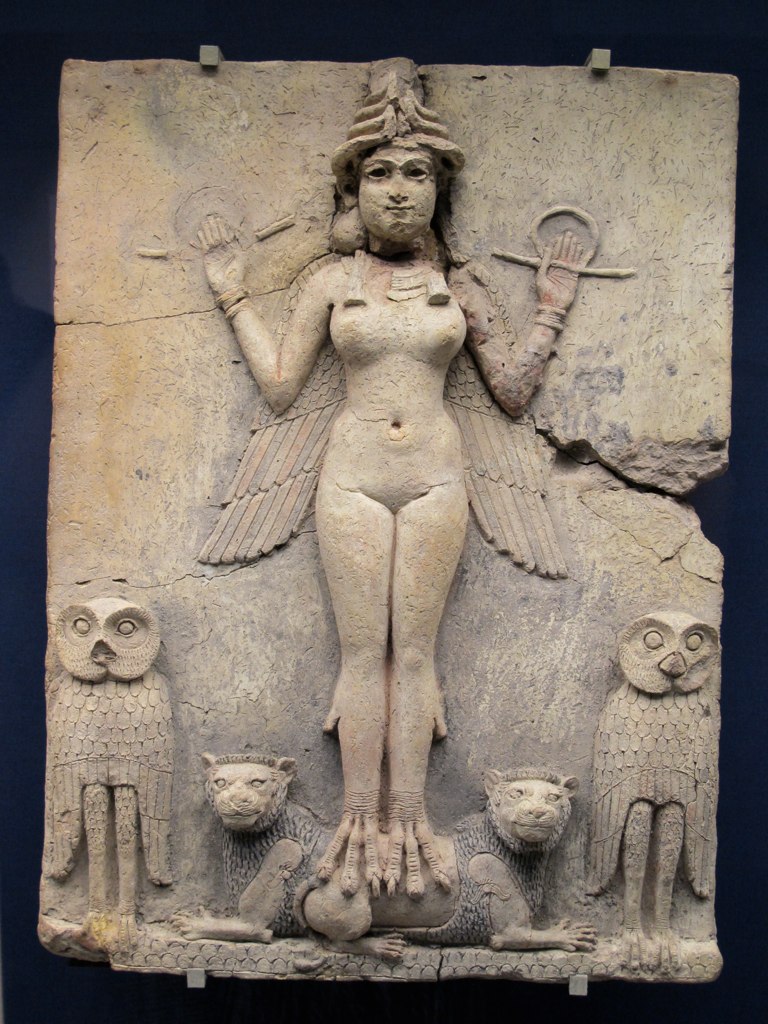|
|
Reproduction of the Burney Relief - August 2010: Charles Alexander Moffat
SOLD In late July 2010 I was contacted by a producer for the Discovery Channel / Animal Planet, with regards to creating a reproduction of the Burney Relief for their TV show "The Haunted". The Burney Relief is a relief sculpture currently housed in the British Museum and is believed to be one of very few surviving sculptures of Lilith. As a Lilith historian and someone who has chosen to paint the topic of Lilith frequently I was honoured to be picked to create a reproduction of the Burney Relief. The original Burney Relief was taller and knowing that this reproduction would be shown on TV (likely using a 16 by 9 format) I added the two braziers, one for plants and the other for fire, to represent the duality of Lilith (being both a fertility goddess and a protector). I also took artistic liberties with her hair and colouring, in an effort to make it more realistic. Likewise I used photographs of lions as references to create more realistic versions of the cats, including the colouring of their fur and whiskers, since the relief version was amateurish. Since the TV show "The Haunted" only needed a digital copy of the painting I got to keep the painting. The painting was later sold the same year to a woman in California who had spotted it on Facebook and decided it would make a good gift for her husband who is a Lilith enthusiast.
Sincerely,
About the Original Burney ReliefThe Burney Relief is a Sumerian terracotta plaque from the Isin-Larsa (Old-Babylonian) period, depicting a winged, nude, fertility goddess believed to be Lilitu, Inanna/Ishtar, or Ereshkigal. Flanked by obedient owls and lions, the goddess is depicted with bird feet and wings to represent how birds protect their young. She is simultaneously depicted as a fertility goddess (due to her nudity), a domesticator of animals, and a farmer/builder (the tools in her hands). It is dated approx. 3,500 years ago. The Burney Relief was discovered around 1924 in southern Iraq, passed via various collectors and later sent to the British Museum in London. The relief came to the public's attention in 1936 when a full-page reproduction was shown in The Illustrated London News. Initially owned by collectors and only loaned to the museum, it was eventually purchased by the museum for the sum of £1,500,000. The British Museum also renamed the plaque the "Queen of the Night Relief" and has gone on several tours. The name "Burney Relief" however has stuck however. The relief was not archaeologically excavated and there is no location for where it was excavated. It may have passed from collector to collector for centuries now. Stylistic it is very similar to other images from the Isin - Larsa / Old Babylonian period. Other works from the period show similar goddesses wearing identical headdresses, necklaces, etc. Some of them may have even been made by the same artist. Relief sculptures were commonly used on altar places for worship. Which goddess the sculpture actually depicts has been questioned frequently. Its possible that Lilitu, Inanna, Ishtar and Ereshkigal are all names of the same goddess, just from different cultures/languages. Cross-cultural spread of religious figures was common in ancient times, when people were sometimes nomadic (fleeing from war or famine) and would carry their religious objects with them. Settling amongst other cultures or taken there by merchants, such gods would acquire new meaning by superstitious people who would create new stories (or adapt old ones) to the new god or goddess. Measuring 50 by 37 centimetres and 3 centimetres thick, the Burney Relief plaque was reasonably easy to transport. The Burney Relief is in excellent condition considering its age. Originally in three pieces and some fragments, the British Museum has repaired and restored parts of it.
|
Website Design by designSEO.ca

